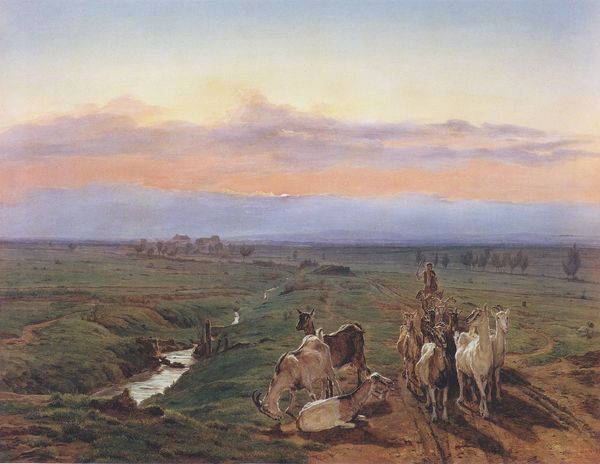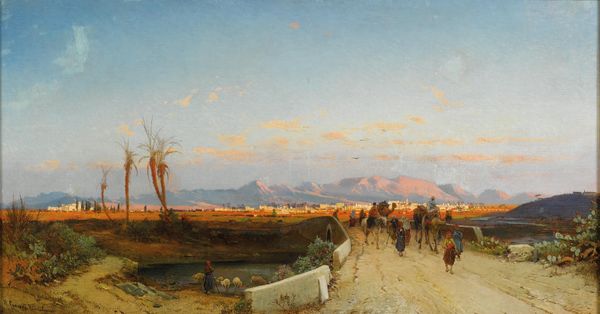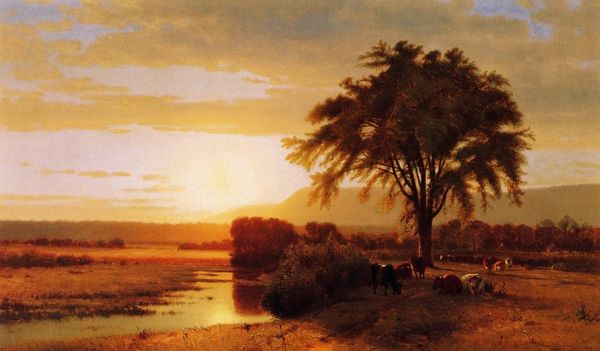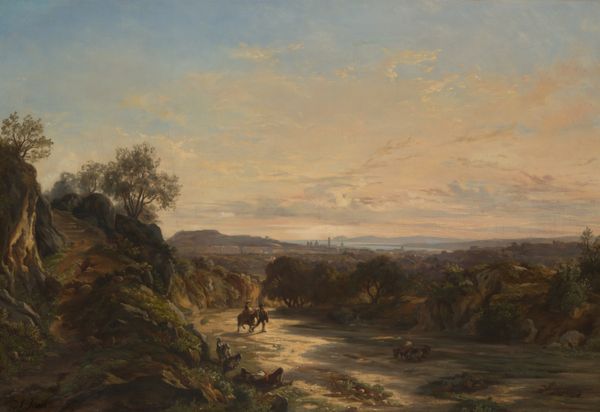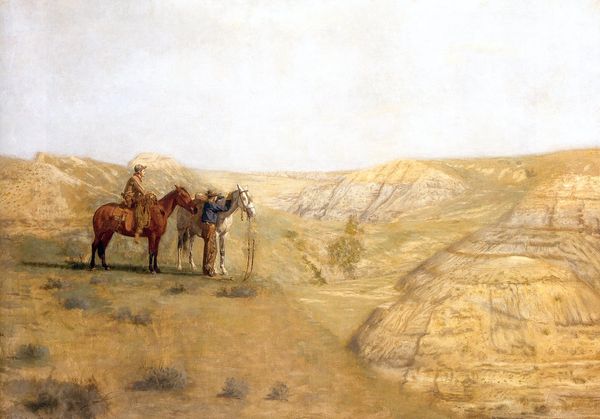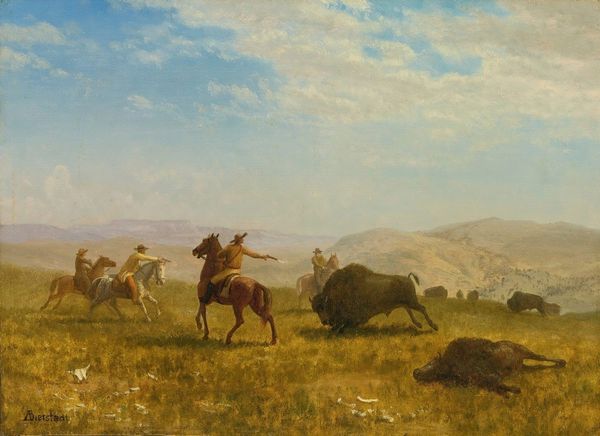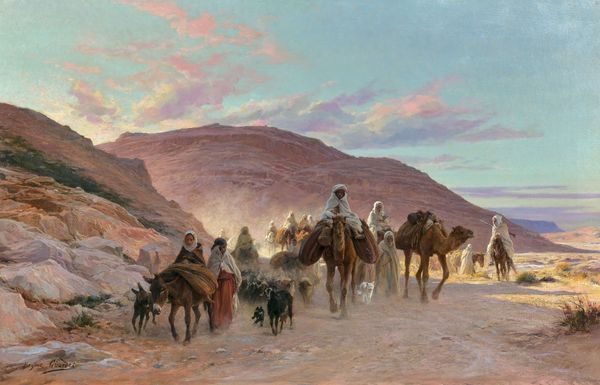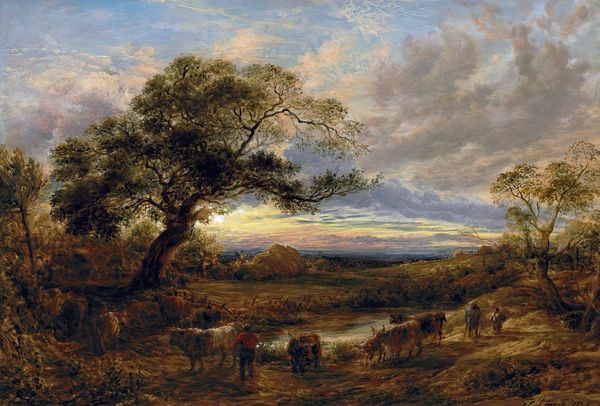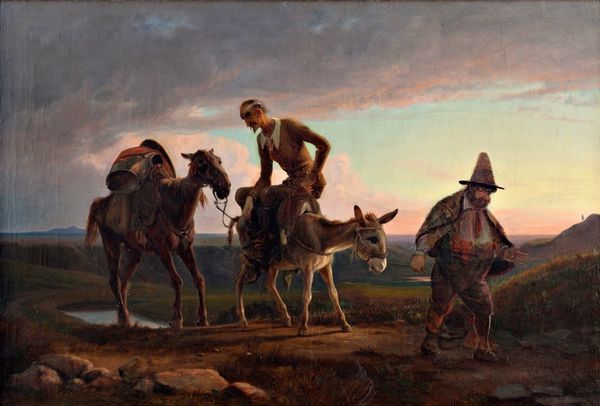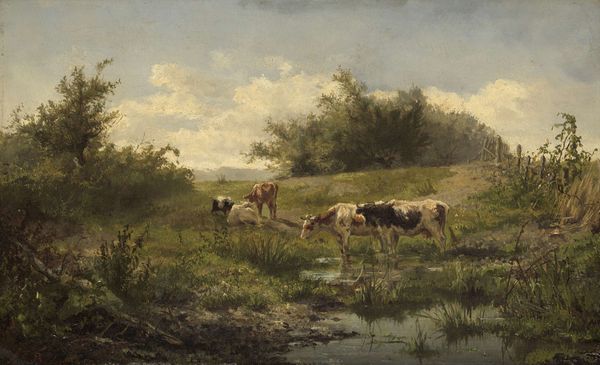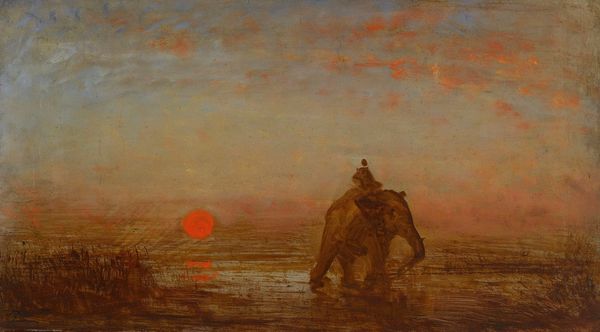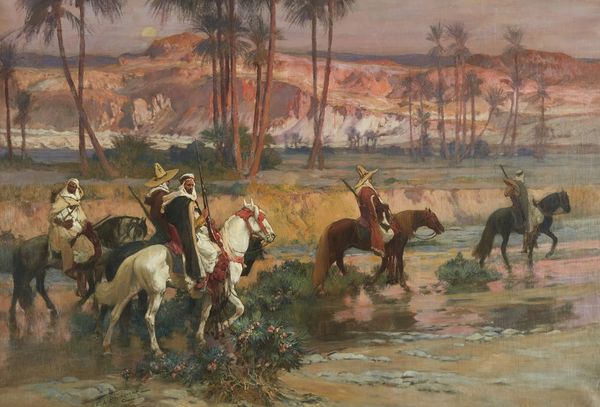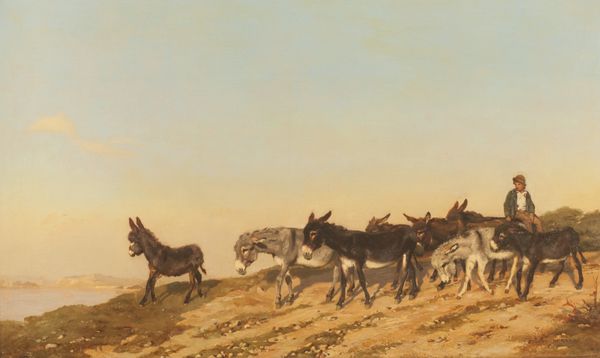
plein-air, oil-paint
#
sky
#
still-life-photography
#
impressionism
#
plein-air
#
oil-paint
#
landscape
#
impressionist landscape
#
oil painting
#
realism
Copyright: Public domain
Editor: We're looking at Eugène Girardet’s "Dans Les Hauts Plateaux, Après L'orage," an oil painting depicting a North African landscape. There's such a sense of stillness and golden light… What strikes you most about this piece? Curator: For me, this painting speaks volumes about Orientalism and its relationship to colonial power. Girardet, like many European artists, traveled to North Africa. What narratives do you think paintings like this constructed for European audiences about the "Orient?" How do those narratives play into a broader history of cultural and political dominance? Editor: I suppose it romanticizes it. Makes it seem exotic, maybe a bit desolate, and certainly not as developed as Europe. Were these artists aware of the power dynamics at play? Curator: It’s complicated. Many were undoubtedly captivated by what they perceived as a fundamentally different way of life. However, by selectively depicting scenes and reinforcing stereotypes, they participated in a visual rhetoric that justified colonial expansion. Consider, for instance, how the camels here can represent both exoticism and also "backwardness" relative to European transport and technology. What’s left out is also key— where are the cities bustling with trade or political discourse, or the many signs of rich cultures in this area? Editor: So, even a seemingly straightforward landscape painting can be read as a political statement, or at least a reflection of the prevailing ideologies of the time. Curator: Absolutely. Art never exists in a vacuum. It's always in conversation with the socio-political context in which it's created and viewed. I wonder, looking at this through a contemporary lens, how can we reclaim some of that representational power and start re-telling the narratives ourselves? Editor: That’s a really important perspective. It encourages a deeper, more critical way of engaging with art history. Curator: Exactly, it’s about dismantling ingrained assumptions and engaging in more equitable modes of representation.
Comments
No comments
Be the first to comment and join the conversation on the ultimate creative platform.
